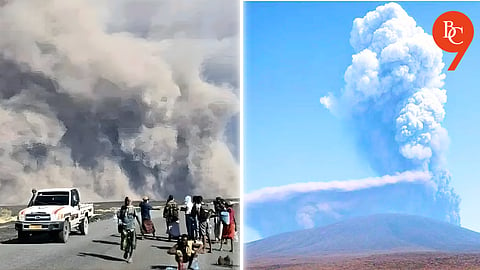

On Tuesday, the India Meteorological Department (IMD) reported that a plume of volcanic ash from Ethiopia reached Delhi after sweeping across the Red Sea and passing over Oman and Yemen. The eruption of the Hayli Gubbi volcano, dormant for several thousand years, began on Sunday morning, sending an ash column thousands of feet into the atmosphere.
The eruption has led to numerous flights in India being canceled, postponed, or redirected due to ash, prompting the country's aviation authority to instruct airlines to "strictly avoid" the affected regions. Experts noted that the extent of ash contamination is uncertain, but it is not expected to affect Delhi's air quality, which was reported as "very poor" according to official measurements on Tuesday.
Volcanic ash consists of minuscule, abrasive particles that are emitted into the air during an eruption. It poses a threat to aviation by potentially harming aircraft engines, polluting airfields, and decreasing visibility.
Volcanic ash contamination is categorized into three levels: low, medium, and high, each with specific guidelines on the duration a pilot can safely fly through them without incurring substantial damage. In this case, the contamination level is not specified.
According to Skymet Weather, a private agency, forecasting the duration for the ash to dissipate is challenging, but the IMD anticipates that Delhi's skies will be clear by Tuesday evening.
Ash from the eruption has disrupted flights, with Air India canceling 11 services and carriers like IndiGo, Akasa Air, and KLM also affected. IndiGo said it is monitoring the situation with international aviation authorities. Mumbai Airport advised passengers to check flight status, while India’s Directorate General of Civil Aviation issued guidelines for pilots to report ash encounters and for airlines to inspect aircraft or delay operations if conditions worsen.
Volcanic ash clouds are rare. But when Iceland's Eyjafjallajökull volcano erupted in 2010, it caused global travel chaos. UK and European airspace was shut or partially shut, leading to the worst air-travel disruption since World War Two.
